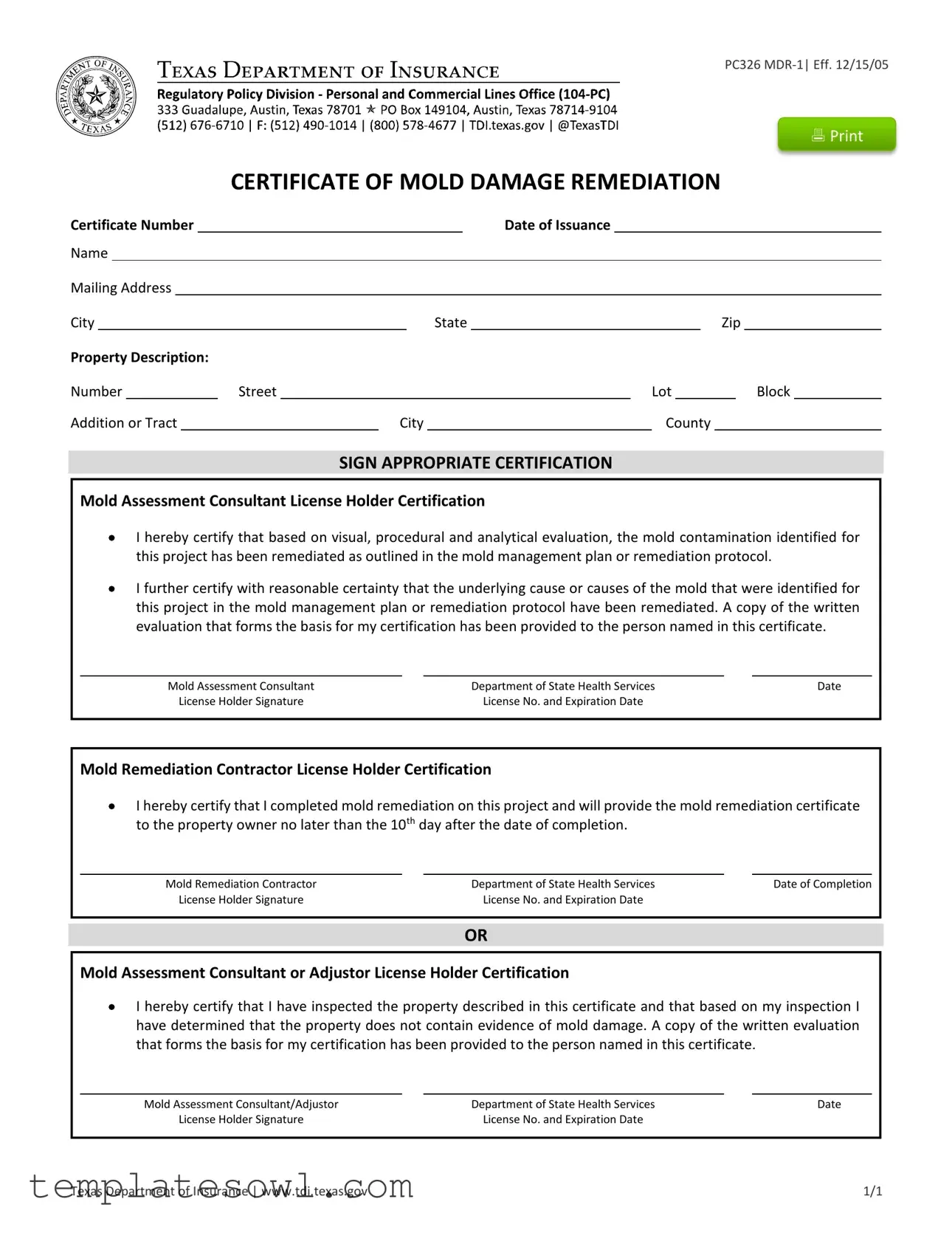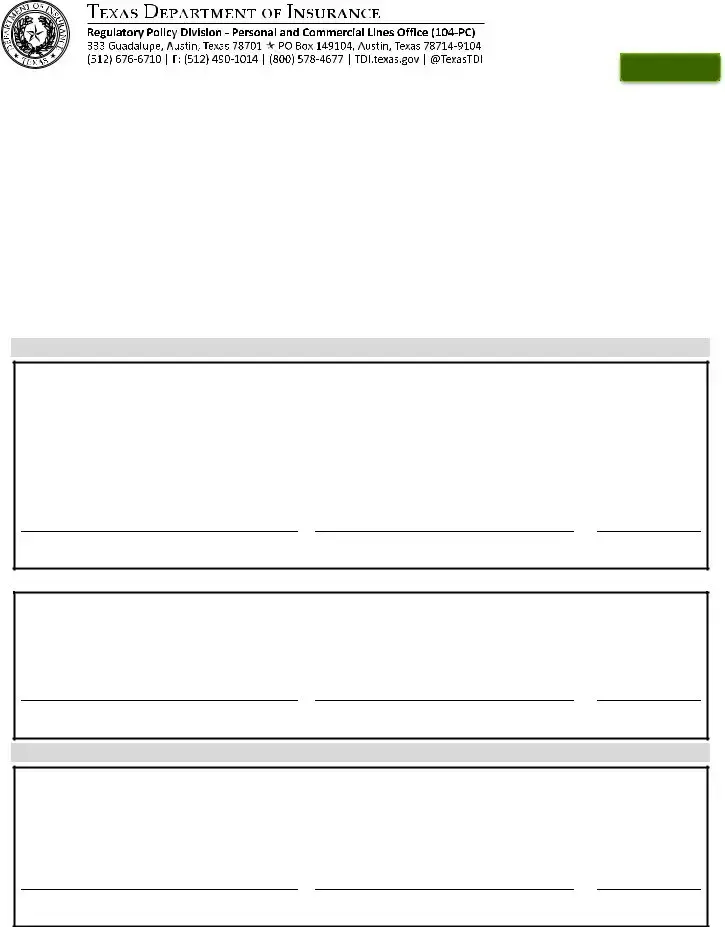What is the purpose of the PC326 MDR-1 form?
The PC326 MDR-1 form is used to certify that mold damage remediation has been completed on a property. This certification serves to assure property owners and other stakeholders that any mold contamination has been adequately addressed, as per the established mold management plan or remediation protocol.
Who can complete and sign the PC326 MDR-1 form?
The form can be completed and signed by a licensed Mold Assessment Consultant or a Mold Remediation Contractor. These professionals are responsible for assessing and remediating mold damage and must have the appropriate licensing from the Department of State Health Services.
What information is required on the form?
The PC326 MDR-1 form requires specific information, including the certificate number, date of issuance, name and mailing address of the property owner, a description of the property, and details about the mold remediation work performed. This information is crucial for tracking and verifying remediation efforts.
How soon after completing remediation must the form be provided to the property owner?
The Mold Remediation Contractor must provide the mold remediation certificate to the property owner no later than the tenth day after the completion of the remediation work. Timely submission is important for ensuring that property owners have proper documentation of the remediation efforts.
What happens if mold damage is found after the PC326 MDR-1 certificate is issued?
If mold damage is identified after the issuance of the PC326 MDR-1 certificate, it may require further assessment and potentially additional remediation. The certification only reflects the condition of the property at the time of inspection and should not be viewed as a lifetime guarantee against mold issues.
Can the form be used for properties that do not currently show evidence of mold?
Yes, the PC326 MDR-1 form can also be used to certify that a property does not contain evidence of mold damage. This option is available for Mold Assessment Consultants or Adjustors who have inspected the property and found no signs of mold contamination.
How can someone verify the credentials of the person signing the form?
To verify the credentials of the person signing the PC326 MDR-1 form, you can check their license status through the Texas Department of State Health Services. This verification ensures that the professional is properly licensed and authorized to perform mold assessments or remediation.
Is the PC326 MDR-1 form required for all mold remediation projects?
The use of the PC326 MDR-1 form may be required based on local regulations or property owner agreements. It is advisable to consult with local health authorities or legal experts to determine whether the form is needed for specific mold remediation projects.

